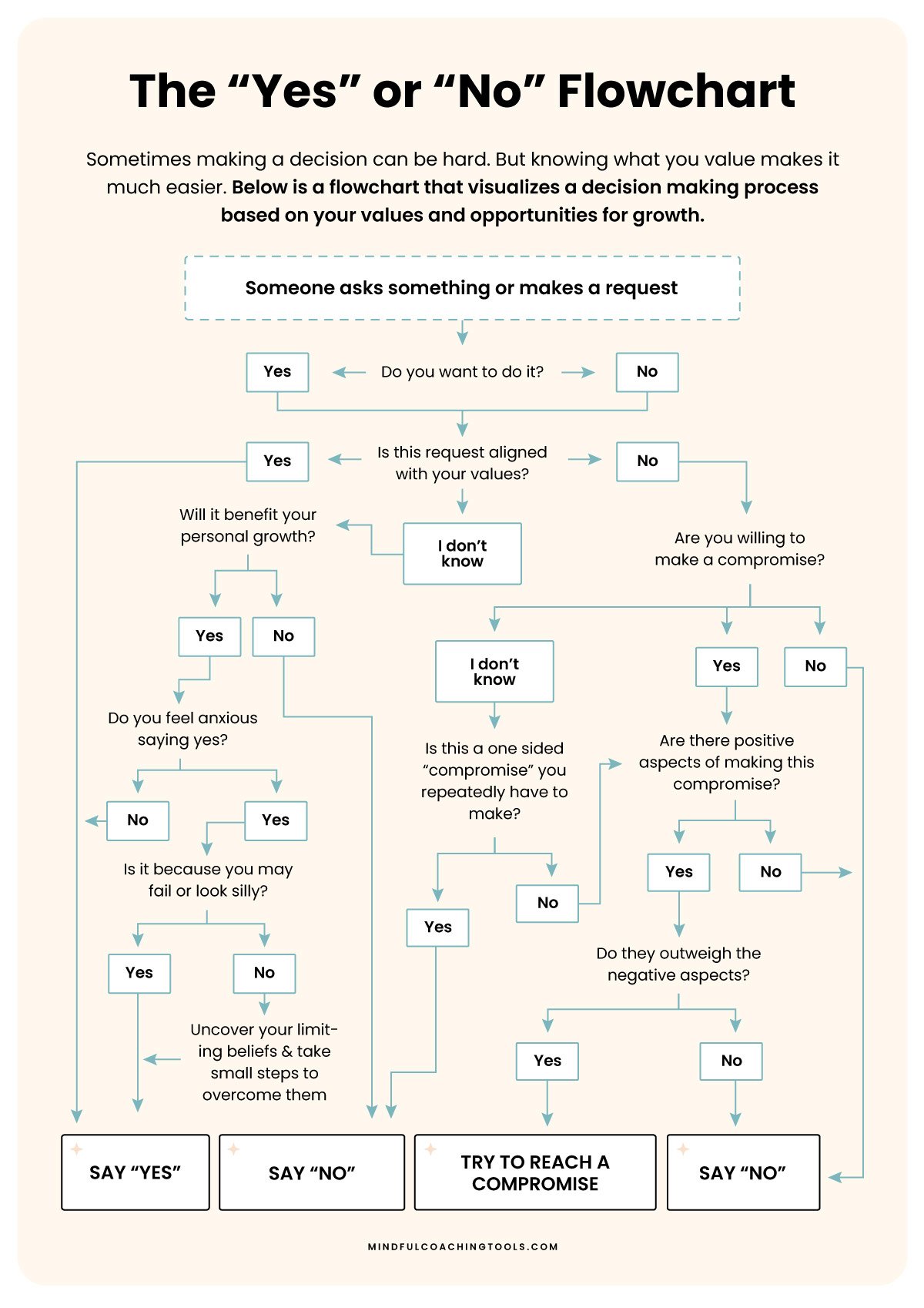When To Say No (OR YES!) - A Visual Guide
TL;DR - Scroll down to see (and download) the free “Yes” or “No” Flowchart.
"No" is just two letters—practically the easiest thing you can pronounce in the English language. But for most of us, saying it out loud to someone feels hard. Why is that?
Our Inability To Say “No” Comes Down To...
01) How we're raised
When we're growing up, most of us are taught to obey what our parents, teachers, and elders are telling us. Saying "no" is made out to be impolite. So, we never really learn how to use it properly.
02) People pleasing
Some people prioritize the happiness and approval of others above their own needs due to a deep-seated need for acceptance or fear of rejection. This can stem from past experiences of having to fit in & how one’s self-value is tied to being likable.
03) Avoiding anxiety
This one’s connected to people pleasing. When we want to say "no" to something, we feel anxious about rejecting someone. Saying "yes" feels much better (in the moment). Thus, that's what we often do—even if the "yes" contradicts our values. This is especially true for chronic people pleasers.
4) Biology
As social creatures, we have an innate need to cooperate, collaborate, and avoid conflict with others. Saying "no" feels like it goes against our natural programming.
5) Porous boundaries
If we lack clear personal boundaries and have low self-confidence, we won't know when or how to say no. We have to get clear on our values and limits before we can enforce them.
How To Say “No”!
👉Method 01: The “No” Sandwich
Place your “no” between two positive statements and serve a “no sandwich.” How do you do this? First, start off with a compliment acknowledging the asker’s need or thanking them for the offer, then politely refuse, and follow up with another positive statement or compliment.
For example: "Thank you for the invitation! I really appreciate it. Unfortunately, I won't be able to make it since I have to focus on this project that I need to finish ASAP. But maybe next time? Let me know if you’re throwing another party!"
👉Method 02: Say “No” Without Saying The Word
A great strategy for maintaining your boundaries is to say "no" without actually using the word. Keep your response short and direct, without offering unnecessary explanations or apologies.
For example, instead of outright refusal, you could say, "I appreciate your offer, but I'm currently committed to other priorities."
👉Method 03: Switch “No” For A Very Specific “Yes”
If you want to say “no” but can’t say it outright, then you can try saying “yes”, but be ultra-specific about how and when you agree. This way, you gain control of the situation and even if they agree, it will be done on your terms.
For example, if your boss asks you to stay longer tomorrow, you could respond with something like, “Yes, I can stay for an extra 2 hours, but I’d need the first half of the day off to run some errands - otherwise, I'll need to leave straight after work.” Or if somebody asks you for a favor that you want to say “no” to, you can say, “Yes, I can do that. Come by on Friday between 17:00 and 18:00 bring your stuff.”
The “Yes” or “No” Flowchart
Sometimes you’re just not sure whether to accept something or decline it. This can lead to a lot of mental frustration in trying to figure out what’s the right decision. Which in turn can lead to not making any decision at all (Hello old friend - paralysis by analysis). But it shouldn’t be that difficult. Below is a little flowchart I’ve created for you which should help you make better decisions faster. There is one caveat though - you HAVE to know your personal values first!
Want to download it for yourself? Or are you looking to use it with your clients? Download the free poster version of this flowchart below!
(It’s high quality! 4500X6000+px so you can print it out large or small without any issues!)
PS! If you’re looking for an editable version (editable in Canva), then it’s also included in the “Self Confidence Workbook”!


